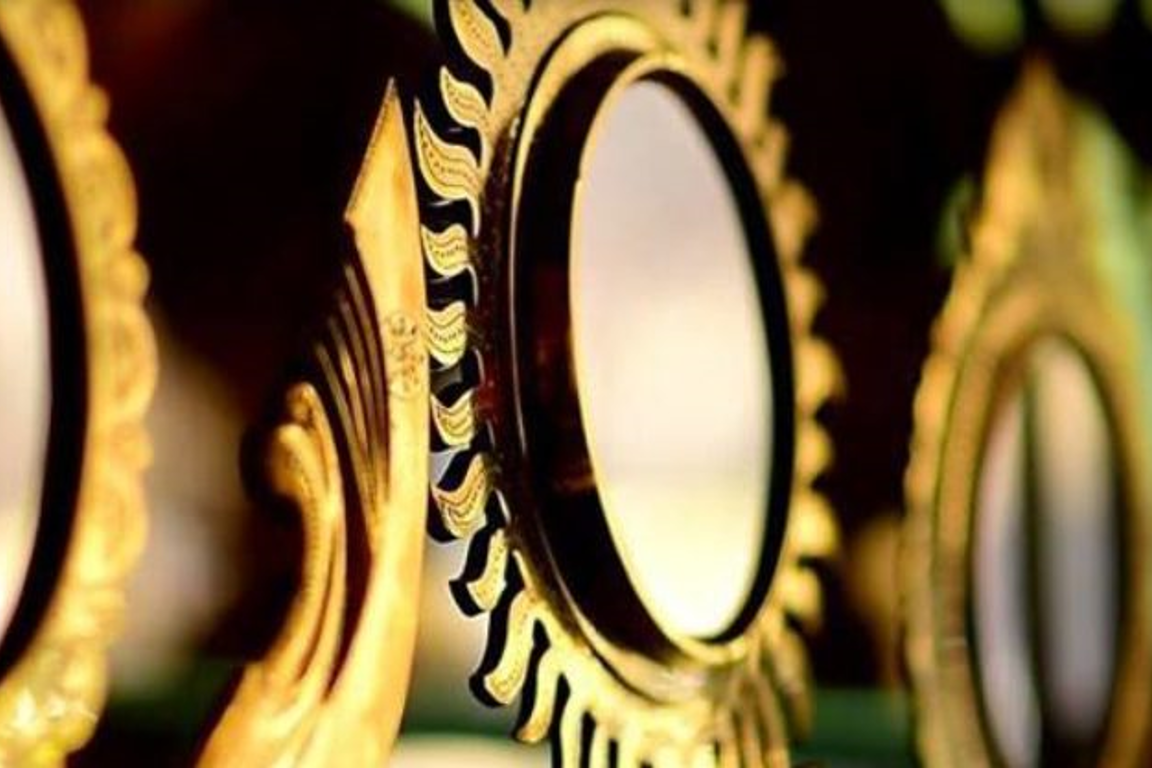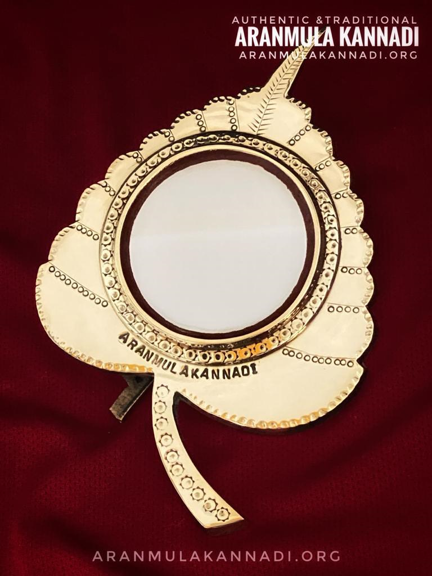
India is known for its multiple elegant art forms and skilful artists who are devoted to it. Still, there are numerous ancient arts which are less known to people and one such ancient art is the Aranmula Kannadi Mirror. It is still practised, without any modifications, by a few artisan families in Aranmula village of Kerala. The making of this metal mirror, a unique gift of India to the world, involves a long process that needs a lot of skills and patience. The mystery of its production is a prestigious family gift handed over through generations. The ancient art of making metal mirrors is still practised in this region of Kerala. The unique thing about this magical mirror is that it is a metal-alloy mirror or front surface reflection mirror, which similarly eliminates secondary reflections, which can be seen in any typical black surface mirror.
The elements used in the creation of the metal mirrors of Aranmula are maintained as a Vishwakarma family's secret. As per the traditions of Aranmula, this mirror is considered as one of the eight auspicious items or ‘ashtamangalyam’. The origin of the metal mirrors is linked with the Parthasarathy Temple of Aranmula. According to the local legends, the local king had brought 8 families of bronze smiths from Tamil Nadu in connection with the renovation work of the Parthasarathy Temple centuries ago. After the renovation of the temple, the bronze smiths settled in the Aranmula. Their offspring became lazy, and a public hassle brought on some hatred from the king, and the king ordered their eviction from the town. The worried artisans took shelter in the Lord Parthasarathy Temple. And it is believed that one of the artisans had a divine vision that gave him the alloy creation of the reflective metal slab that gives distortion-free images. The artisans together moulded a spectacular crown out of this mirror-like bronze and gifted it to the king. Then the king not only pardoned them but similarly honoured them with a lot of land and jewels. Since then, the artisans took up metal mirrors making as their profession, exhibiting this masterpiece to the entire world.

Today, very few people know that only Aranmula's artisans know the secrets behind handcrafting the metal mirrors and barely a few people own these beautiful artefacts around the world. The metal mirrors of Aranmula are incredibly different from any other typical mirrors. The image from the Aranmula mirror is reflected from the upper surface of the reflecting material, whereas in the glass mirror, the image is reflected from the bottom layer, where mercury coating is put. There is an incredible way to test these mirrors, if a person touches the mirror with one of their fingers, and watch the reflected image on the mirror, there will not be any gap between the finger and the reflected image in the original metal mirror of Aranmula, but in all other mirrors, there will be a gap.

Making these bronze metal mirrors is a long process that needs a lot of skills and patience. The undisclosed metals which are only known to the seven artisan families of Aranmula are alloyed with copper and tin to cast the mirror in typical clay moulds. This method is an ancient lost-wax process in traditional style after melting the metals in a furnace fitted with a manual blower. According to one of the artisans, they primarily make 3 mirrors, before one that is desirable for coating and without damages is completed. The moulded metal disc is ascended on a wooden plank to smooth it, utilizing well-ground burnt clay powder and castor oil on a jute cloth, and this polishing process can go on for 2-3 days. The polished metal discs are then embarked on bronze frames with magnificent carvings.

In the era of widely upgraded technology, anyone would expect that the secrets of this 600-year-old art form would be easily learned. Research by Sharda Srinivasan and her colleagues, researchers in the Archaeometallurgy in the National Institute of Advanced Studies at the Indian Institute of Science, Banglore, discovered that the Aranmula metal mirrors were made of a binary copper-tin alloy with 32-34% tin. Sharda also pointed out that the skills of alloying were evolved to such perfection by the Aranmula artisans that it fitted the pure delta stage of bronze, giving the best likely surface of the metal mirrors. According to the Aranmula artisans, the majestic metal mirrors which they make takes a lot of techniques and patience. Thus, the smallest mirror of one-and-a-half inches costs about Rs 950. An Aranmula metal mirror with a length of 2 inches, weighing 200 gm costs Rs 1200, whereas the one with the length of 6 inches, weighing two-and-a-half kg costs around Rs 15000. The largest known metal mirror of Aranmula is at the British Museum with a height of 18 inches and it is said to be worth of a few lakhs, as this size mirror is no longer made nowadays.

Recently, the Aranmula metal mirror art was awarded a Geographical Indicator (GI) Patent in India. The government of Kerala tried to add some outsider artisans to the community of Aranmula makers to enhance the local business, but then the families of Aranmula artisans declined this offer as they preferred to preserve the centuries-old secret of Aranmula mirrors. Today, only a few dozen mirrors are made every month, as the final stage of polishing is very costly. However, in the view of it's gradually rising fame, the Aranmula metal mirror finds a good market along with the tourists, particularly in August, when the festival of Onam is celebrated in Kerala. The Aranmula has become quite popular for its cultural and pilgrim tourism. The artefacts like these unique metal mirrors of Aranmula hold a great historical significance, and they are the results of Kerala's rich cultural and artistic values conserved since centuries.
__________________________
Reference:
- www.aranmulakannadi.org
- www.wikipedia.com
- www.keralatourism.org
